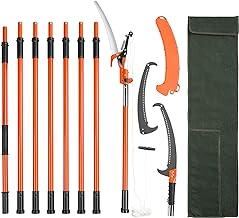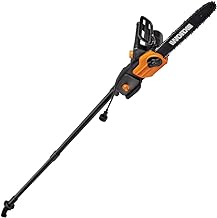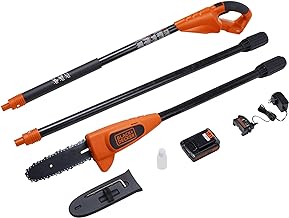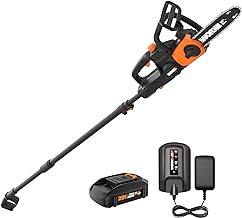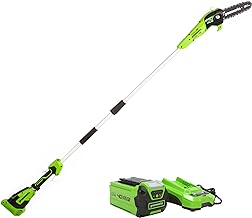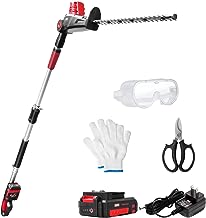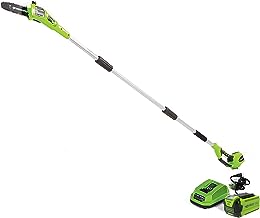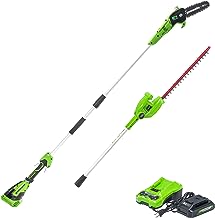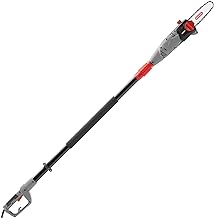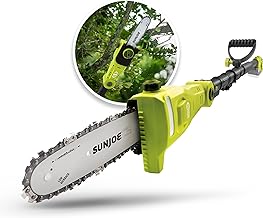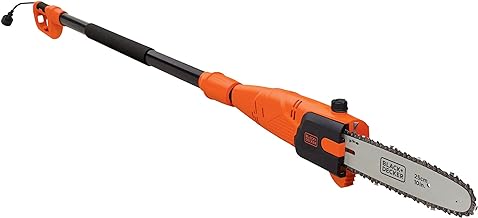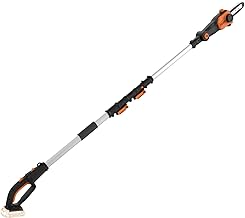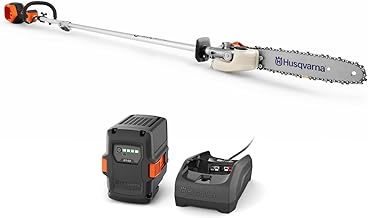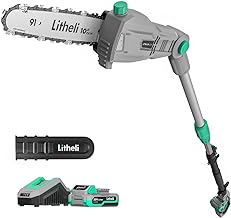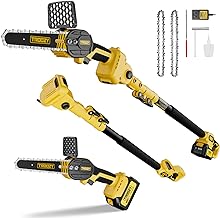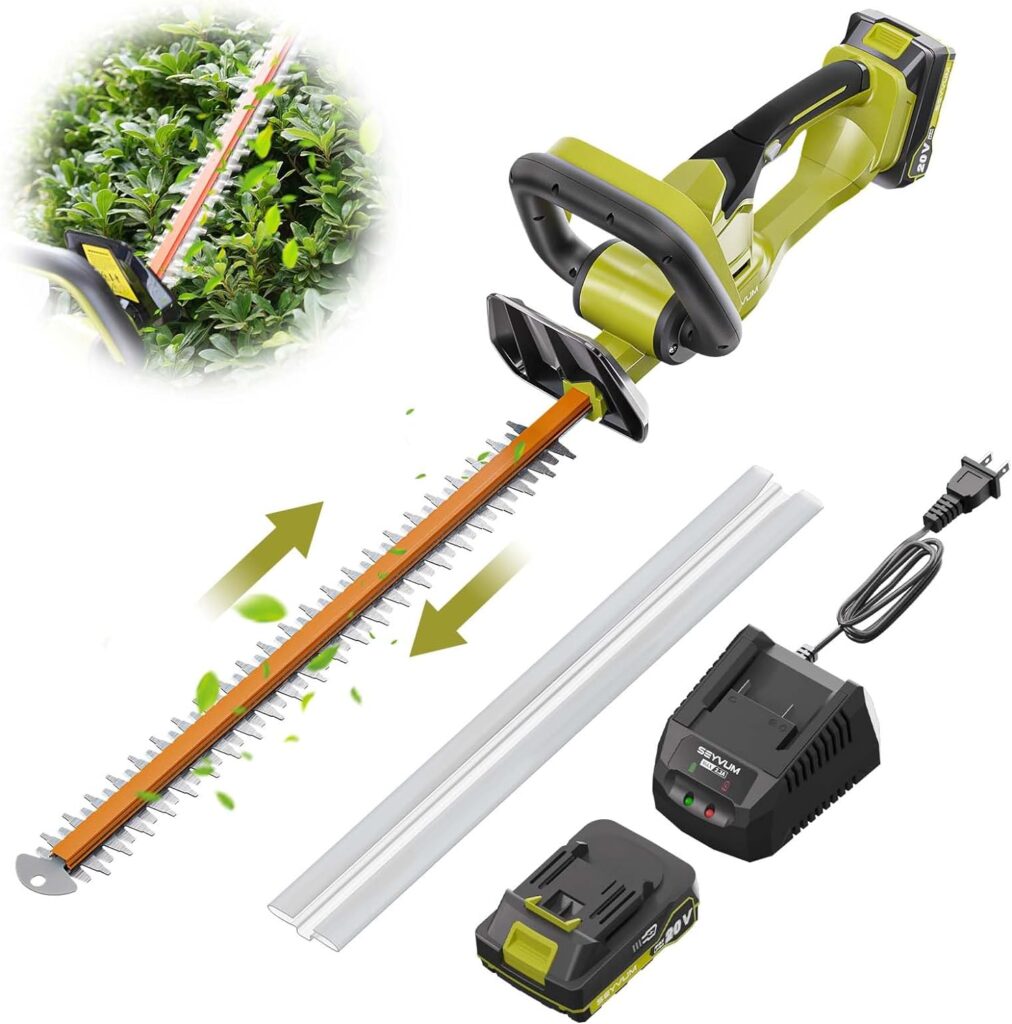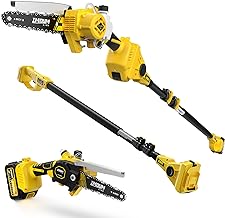Pole Saws For Tree Trimming
Pole Saws for Tree Trimming
You’re looking for the right pole saw to tackle tree trimming tasks efficiently and safely.
To find the perfect fit, consider your yard size, tree coverage, and specific trimming needs. Evaluate whether a manual, electric, or gas-powered saw suits you best.
Don’t forget to assess the pole length for reaching high branches. With so many options available, it’s important to prioritize key features like reach, bar and chain size, weight, and power source.
Learn how to choose the ideal pole saw for your unique situation and master the art of safe and effective tree trimming.
Choosing the Right Pole Saw
When evaluating your yard’s specific needs, consider the size of your yard and tree coverage to determine the type of pole saw that will best suit your trimming tasks.
If you have a small to medium-sized yard with minimal tree coverage, a manual or electric pole saw may be sufficient.
However, if you have a larger yard with numerous trees, gas-powered models may be more suitable. Consider the pole length and its ability to reach the high branches.
Gas-powered models often provide more power and longer reach, making them ideal for larger yards. Assess your specific needs to choose the right pole saw for your trimming tasks.
Key Features to Consider
As you select a pole saw, consider the following key features that will impact your trimming experience:
Feature | Description | Considerations |
Reach/Extension Length | Distance from handle to cutting bar | Consider tree height and branch length |
Bar and Chain Size | Cutting capacity and efficiency | Choose based on branch thickness and frequency of use |
Weight | Ergonomics and fatigue reduction | Lighter saws for extended use, heavier for occasional use |
Power Source | Electric, gas, or manual operation | Choose based on yard size, usage frequency, and mobility needs |
Safety Features | Protective guards, kill switches, and more | Ensure features align with your safety priorities |
When evaluating pole saws, these key features will greatly impact your trimming experience. By considering your specific needs and priorities, you’ll find the perfect saw for your tree trimming tasks.
Types of Pole Saws Available
You’ll find that pole saws come in a variety of types, including corded electric, cordless battery-powered, gas-powered, manual, and multi-tool options, each catering to specific needs and preferences.
Cordless pole saws offer mobility and convenience, making them ideal for small to medium-sized yards. Gas-powered pole saws, on the other hand, provide more power and are suitable for larger yards or heavy-duty trimming.
Manual pole saws, like pruning saws, are a cost-effective option for occasional use. Multi-tool pole saws offer versatility, allowing you to switch between different attachments.
When choosing a pole saw, consider your yard size, frequency of use, and personal preferences to select the right type for your tree trimming needs.
How to Use a Pole Saw
To get started with trimming, hold the pole saw with both hands, one hand near the base of the pole and the other near the midpoint, maintaining a firm grip and balance.
As you begin pruning, focus on the branch you want to cut, ensuring it’s within comfortable reach. Keep your body positioned at a 45-degree angle to the branch, with the saw blade parallel to the branch.
Start the saw and slowly move it through the branch, using a smooth, even motion. For thicker branches, make multiple cuts, working from the outside in.
Remember to prioritize safety, keeping a safe distance from the branch and avoiding any sudden movements.
Safety Precautions to Take
Your pole saw’s safety features are only as effective as the precautions you take while operating it, so always wear protective gear, including gloves, safety glasses, and a hard hat.
This will protect you from flying debris and sawdust. Additionally, consider the reach/extension length of your pole saw to avoid overreaching, which can lead to accidents. Be mindful of your surroundings, clearing the area of any obstacles or people.
Safety Precautions | Description | Importance |
Wear safety gear | Gloves, safety glasses, hard hat | Protects from debris and sawdust |
Check surroundings | Clear area of obstacles, people | Prevents accidents and injuries |
Mind the reach | Avoid overreaching, use correct stance | Prevents loss of balance, accidents |
Inspect equipment | Regularly check pole saw, cord, and chain | Verifies proper function, reduces risk |
Maintenance and Storage Tips
Proper maintenance and storage of your pole saw are essential to guarantee peak performance, longevity, and safety. You’ll want to regularly inspect your saw for signs of wear and tear, and perform tasks like chain sharpening and lubrication to keep it running smoothly.
Clean your saw after each use, and store it in a dry, secure location to prevent damage. When storing, make sure the saw is turned off and the chain is covered to prevent accidents.
Proper maintenance and storage will also help prevent rust and corrosion, ensuring your pole saw remains in top condition for years to come. By following these simple tips, you’ll be able to enjoy safe and efficient tree trimming for seasons to come.
FAQ
How big of a tree can a pole saw cut?
Dependent on the specific model and its cutting capacity, a pole saw can typically cut through branches with diameters ranging from 6 to 12 inches, although some high-end models can handle thicker branches up to 15 inches in diameter.
When considering the size of the tree you want to trim, think about the branches to cut and the maximum reach you need. With a pole saw, you can safely trim branches that are out of reach, making it an ideal tool for tree maintenance.
Keep in mind that the thicker the branch, the more powerful the pole saw needs to be. Always choose a pole saw that matches the size of the branches you need to cut, ensuring a clean and safe cut.
What is the difference between a pole pruner and a pole saw?
You may wonder what distinguishes a pole pruner from a pole saw, especially since both are used for tree trimming and maintenance. The key difference lies in their design and functionality.
A pole pruner is typically a manual or electric-powered tool with a cutting blade, designed for pruning and trimming smaller branches. It usually has a shorter reach and is more suited for fine-tuning and shaping trees.
On the other hand, a pole saw is a more heavy-duty tool, often gas-powered, with a longer reach/extension length, making it ideal for cutting thicker branches and larger limbs.
While both tools serve a purpose in tree maintenance, understanding their differences will help you choose the right tool for your specific tree trimming needs.
Which is better, gas or battery pole saw?
When deciding between a gas or battery pole saw, you’ll need to weigh the pros and cons of each, considering factors like power, convenience, and maintenance requirements.
Gas pole saws offer more power and longer cutting times, making them ideal for heavy-duty trimming and large yards. However, they’re noisier, heavier, and require more maintenance.
Battery pole saws, on the other hand, are lighter, quieter, and require less maintenance, but may lack the power and runtime of gas models.
Consider your specific needs and preferences to make an informed decision. If you prioritize power and don’t mind the extra maintenance, a gas pole saw might be the better choice. If you prefer a more convenient, low-maintenance option, a battery pole saw could be the way to go.
Disclaimer: As an Amazon Associate I earn from qualifying purchases.

